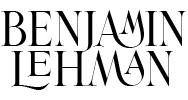Must Have New Photography Gear: Umbrellas, Octaboxes and Simple Reflectors
I’ll admit it, I am a gear hound. It’s down right thrilling when the UPS guy rolls up with a box full of goodies. But perhaps even more exciting for me is the experimentation phase that ultimately comes when a new piece of equipment is dropped on my doorstep. Cameras, lights, modifiers, stands, doodads, and widgets – every new tool in your digital photography arsenal allows you to explore and expand your style, and finding out exactly how you’ll utilize these new apparatus is 90% of the fun (the other 10% obviously the joy of just opening the boxes and squealing with glee.)
Today’s New Gear: Digital Photography Light Modifiers
If you’ve read my blog in the past, then you know I am huge fan of Paul C. Buff and the gear he has engineered. His Einstein light and Cyber Commander wireless sync trigger play key roles in pretty much every commercial photo I take. But I also have a lot of other pieces from his catalog of products, and Paul C. Buff light modifiers comprise a large bulk of my inventory.
White PLM™ Umbrellas
My first product on this list is the 51″ White PLM Umbrella from PCB. I am a strong believer that you can do amazing photos with very little gear. One light, one reflector, one modifier, one camera; that’s a basic recipe for success, and if you don’t believe just look at what Annie Leibovitz has done with just such a setup.
What more gear does allow you, though, is more flexibility and control over your vision. My current stock of umbrellas is rather anemic. I have one 24 inch shoot-through white umbrella and one massive 7 foot reflective umbrella, that’s it. My 7 foot umbrella is a work horse and goes with me everywhere, but honestly, it’s just overkill a lot of the time. It’s also hard to work with in tight spaces. Because of this I decided to buy the 51 inch shoot through from PCB and, at $30, it’s sort of a steal.

Medium Foldable Octabox
Octaboxes are magic. They do all of the great things a traditional, rectangular softbox can do, only better. How so? At equivalent sizes, they give off a slightly wider spread of light. They also create amazing catch-lights in the eyes of your subjects.
They also come with two drawbacks. First, they are usually more expensive than a same-sized softbox. Secondly, they are a pain in the ass to set up. A tension-rod based octabox can drive any normal person to the cliffs of insanity. That is, unless, you spend a little more money and get a foldable octabox! And that’s just what I did. I already had an octabox in the same size range, but the time and effort needed to get it ready meant it spent a few opportune moments in it’s bag rather than on the end of a light stand – that’s a bad thing. Now I am looking forward to using this new foldable version in situations where I may have defaulted to a regular softbox out of the necessity of time and sanity.

7 inch Standard Reflector
Just as the name indicates, this is a pretty standard piece of light modifying gear. Just how standard? Well, one of these reflectors come with every Alien Bees flash head you buy, so it’s pretty ubiquitous with Paul C. Buff gear. However, my Einstein did not come with one. So, where I have one of these for each of my Alien Bees, my Einstein sits awkwardly bare of a reflector and, when it comes to basic light control, nothing quite does the job of blasting light in a particular direction better than a 7-inch reflector!

It’s pretty obvious from my work that how I work with light is more important than which camera I am using. The camera itself is just a tool to capture the information that’s put in front of it. It’s the job of your light, and the tools that shape and modify it, to make that information something that’s intriguing to the person looking at it.
